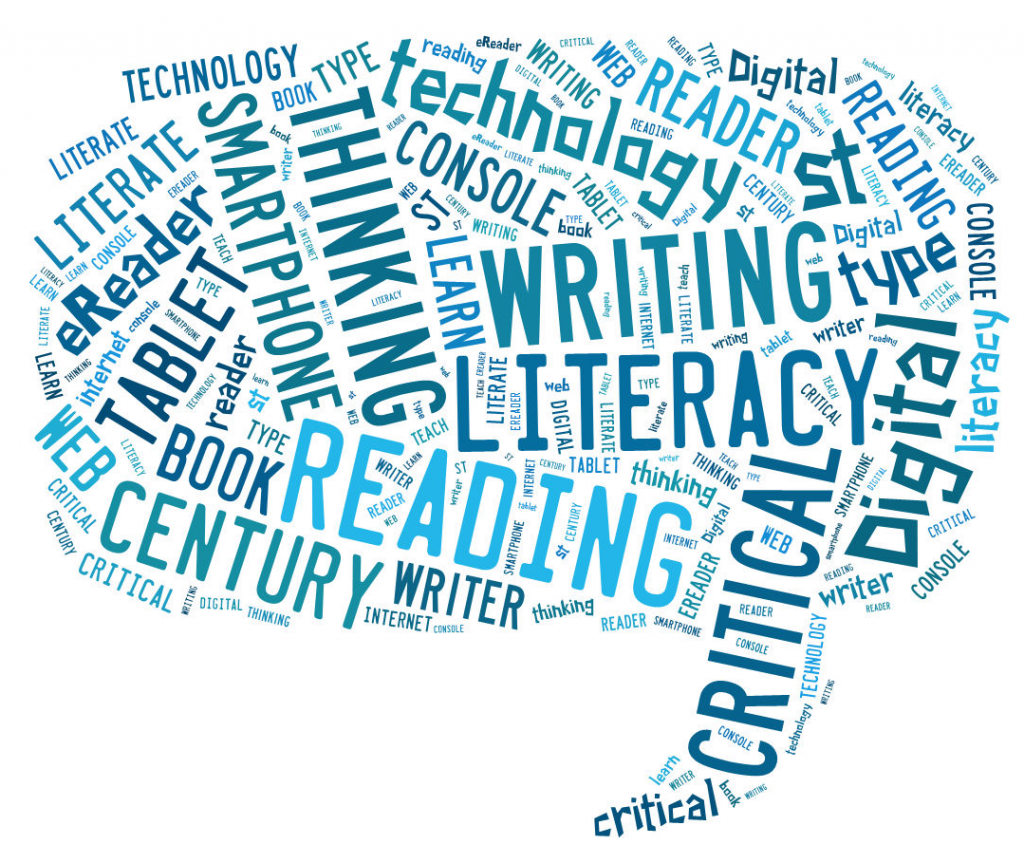The new era of LITERACY…

When I was in school, the term literacy had a different meaning. It only referred to the skill of being able to listen, speak, read and write properly. According to UNESCO, literacy is the ability to identify, understand, interpret, create, communicate and compute, using printed and written materials associated with varying contexts. But as time passes….. everything changes, everything demands updation… So this term also has updated itself. In this technological era, literacy is also with respect to technology. Common Sense Media stated that Media literacy is the ability to identify different types of media and understand the messages they’re sending. The article shared by Bart mentioned that media literacy is the ability to understand information that is presented to us and respond appropriately. We need to make a conscious effort to understand how all forms of media are created and consumed. So, in my view being literate stands for being aware and having knowledge about everything that surrounds us. Well, I know…. to have knowledge about everything is not an easy task. We are always learning and being a full-time leaner is important.

The 21st century’s literacy includes the ability to use technology and media appropriately. The literacy elements comprise the attributes mentioned in this image. These are the elements that can be considered for fully literate students. The four basic skills are mandatory for literacy but creativity, viewing and technology also play a vital part. I have a few more skills that I think are required as literacy elements such as critical thinking, physical literacy, financial literacy, etc… In this blog, I would like to discuss a few points regarding the element “Technology”. It can also be named media and digital literacy. Media literacy is an essential skill in the digital age. With the rising popularity of technological tools, media has become very easily accessible. Some applications are free to use, we can watch content whatever we feel like. And if some have subscriptions, then they are also available at nominal charges. Media has never been so easily accessible as it is now. This accessibility demands being media literate.
How to become media literate?
The National Association of Media Literacy believes that media literacy allows the individual the power to “access, analyze, evaluate, create, and act using all forms of communication.” In other words, to think deeply about media content, to develop our own opinions and to know what a piece of media is telling us is considered to be media literate. Being media literate is an ongoing process… So, let’s discuss some ways through which we can become media literate.
- You must train yourself and try to read as much as possible about media literacy. There are many articles and videos available on the internet.
- Try to practice your skill and implement the things that you read about media.
- Try to understand the purpose of the content or the goal of the author.
- The more you will practice, the more habitual you will become. This will help you to judge which content is beneficial for you and which is not.
The above mentioned practices clearly denote that media literacy is an ongoing process and it needs consistent practice. Not only teachers but parents/guardians can follow these and learn about media and the digital world. If we ourselves know about them then only we will be able to teach our kids about it. Common Sense Media provides some key questions to ask when teaching media literacy:
- Who created this?
- Why did they make it?
- Who is the message for?
- What techniques are being used to make this message credible or believable?
- What details were left out, and why?
- How did the message make you feel?
These questions will help students to have a deeper knowledge about this particular form of literacy. Lastly, I would like to share a video that I found on Youtube. I think it is interesting as it has represented media literacy in an animated way which will be helpful for us to teach kids. We can show this in our classrooms.
Thanks for sharing this video with us. I remember someone sharing it in one of the past courses that I took and I like how it is laid out and easy to follow. I think it has been a common theme throughout the blogs this week that definitions of the word literate have changed over time, especially since we may have gone to elementary school. I think that with the evolution of technology and other advancements in the world, the definition will continue to change and modify to fit the current world.
Your well laid out ‘how to’ is appreciated Shirsty. I agree that becoming media literate is an ongoing process and needs consistent practice. What really makes your point relevant is how quickly technology changes, and therefore the need for what it means to be literate will as well. The level of media literacy that I required growing up is so different than that of my parents, and will be drastically different than my own children and the students I see daily. I do feel lucky that I have grown up as technology and media has evolved and have been able to roll with it, for now.
Shristy, I totally agree with your expanded view of literacy as having knowledge in a variety of topics. I don’t think this means to be literate you need to be an expert on everything, but be competent in that area. I agree that becoming media literate requires training and research. This, however, makes me wonder how many people out there will never actually become media literate, because they don’t have the time, energy, resources, or desire to learn these skills.